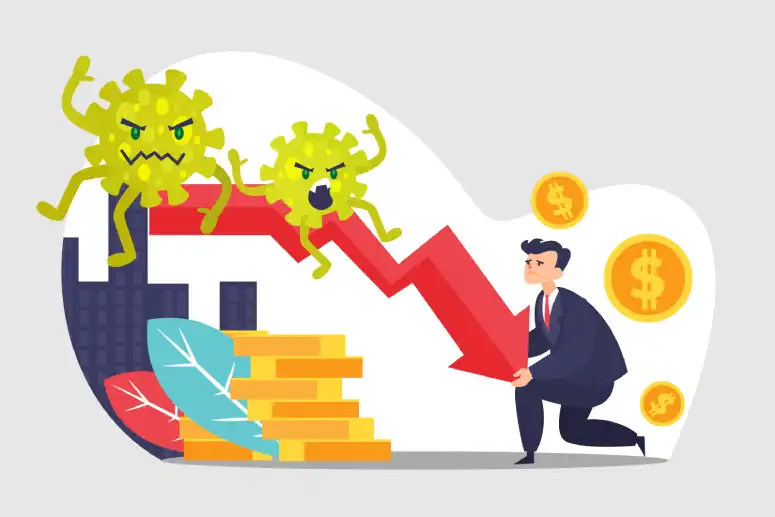Non-Banking Financial Companies (NBFCs) have played a vital role in the Indian Financial system by promoting inclusive growth in the economy by catering to the needs of bank overlooked clients. NBFCs, creating equilibrium in resource allocation, has contributed to the development of the economy by providing a fillip to entrepreneurial ventures, FDI generation, wealth creation, by supporting lower strata of the population (mainly catered by MFIs). Besides, NBFCs played a key role in the development of core infra sectors which has a long gestation period where the conventional banking takes a backseat.
The outbreak of Covid-19 and the resultant lockdown have had repercussions on the operations as well as lending support received by the NBFCs. Leveraged NBFCs with a gearing level of 5x-6x are more adversely affected as they find it challenging to raise funds. The NBFCs faced double whammy as banks were mulling and largely refraining to provide the moratorium while NBFCs were following the RBI directives on moratorium. This was likely to create ALM mismatch and liquidity problems for the sector. The regulatory had left it at the discretion of the banks of extending moratorium to NBFCs, though most of the banks were in favour of granting moratorium.
With Government’s directive to companies to not cut salaries, customers employed with Category A and Category B companies may not witness a significant impact on their repayment abilities. However, the weaker sections of the economy who live on “hand-to-mouth” earnings, a major borrower category of NBFC-MFI, have experienced dip in their earning potentials. According to National Council of Applied Economic Research (NCAER), with the outbreak of Covid-19 and the resultant lockdown, income of almost 85% of households in the national capital region (NCR) is impacted. NBFCs being predominant lenders to these sections have witnessed a deterioration in their collection efficiency, post announcement of lock-down.
Nevertheless, the staggered reopening of nationwide lockdown is expected to revitalise the earning potential of the unorganised sector. Besides, Moratorium 2.0 was a just-in-time and extremely conducive relief measure to provide a breather to retail borrowers to stabilise their operations and further bolster their liquidity position. As such the phased re-opening of economic activities coupled with the two moratoriums granted (of 3 months each) will facilitate the borrowers to stabilise their earnings and honour their EMIs to NBFCs, post completion of Moratorium 2.0. Ideally, people in lower EMI brackets and lower indebtedness would be less affected in comparison to people with multiple loans. As such, the NBFCs which has done a better evaluation of credit profile to check the level of indebtedness would be better-off. However, in case the infections increase rapidly forcing extended lockdown of economic activities, the situation would further worsen.
The post lockdown scenario will push the demand for fresh loans but only the NBFCs with decent liquidity and ability to raise funds will be able to seize the opportunity. Considering the rise in demand for fresh loans, the NBFCs should be cautious while assessing the credit profile of the borrower, considering the Covid-19 impact, to arrest any further impact on the asset quality. Besides, the asset value has taken a hit, especially in real estate, thereby requiring the NBFCs to reassess the Loan-To-Value (LTV) ratio for existing as well as future borrowers.
Government’s relief measures:
The liquidity measures announced by the Reserve Bank of India (RBI) in the form of TLTRO 1.0 and TLTRO 2.0 have witnessed tepid response from banks as the measures expected banks to increase its credit exposure to NBFC sector without providing any credit protection against it. The central bank received bids for only 50% (Rs.25,000 crore) of the offered amount in TLTRO 2.0. Government’s Rs.20 lakh crore Covid-19 stimulus for India announced in mid-May comprise of liquidity scheme of Rs.30,000 crore for NBFCs, HFCs and MFIs that will be fully guaranteed by Government of India. However, this scheme constitutes only 2% of the total outstanding debt of the top 20 NBFCs that contribute approximately 75% of the total assets of the NBFC sector.
Besides, the partial credit guarantee scheme (PCGS) amounting to Rs.45,000 crore wherein the government will provide 20% first loss sovereign guarantee to public sector banks is expected to address the bank’s risk aversion towards the NBFC sector. Small and medium-sized NBFCs are expected to be benefited from these schemes as it will mitigate the credit risk either fully or partially. The success of the above schemes pivots on its effective execution and response from currently risk-averse banks. Though the government stimulus would act as a stop gap liquidity arrangement for the NBFCs, the revival of the sector would highly depend on the timely rebound of economic / commercial activities.
We at MPFASL are of the view that the staggered reopening of the economic activities from 1st June 2020 and Moratorium 2.0 granted till August 2020 will provide much needed respite to the lower strata of the economy to stabilise their earning potential. This will further help the NBFCs (those who enjoy moratorium) to arrest any further ALM mismatch and maintain asset quality. Also, the timeliness and quantum of actual outflow of government stimulus especially to the small and medium NBFCs will be a key monitorable for the early resurgence of the sector. However, this only depends on the future course of the Covid-19 spread as well as early breakthrough in the Covid-19 vaccines.

